Final Review: Tier IX French Premium Cruiser Carnot
8 min read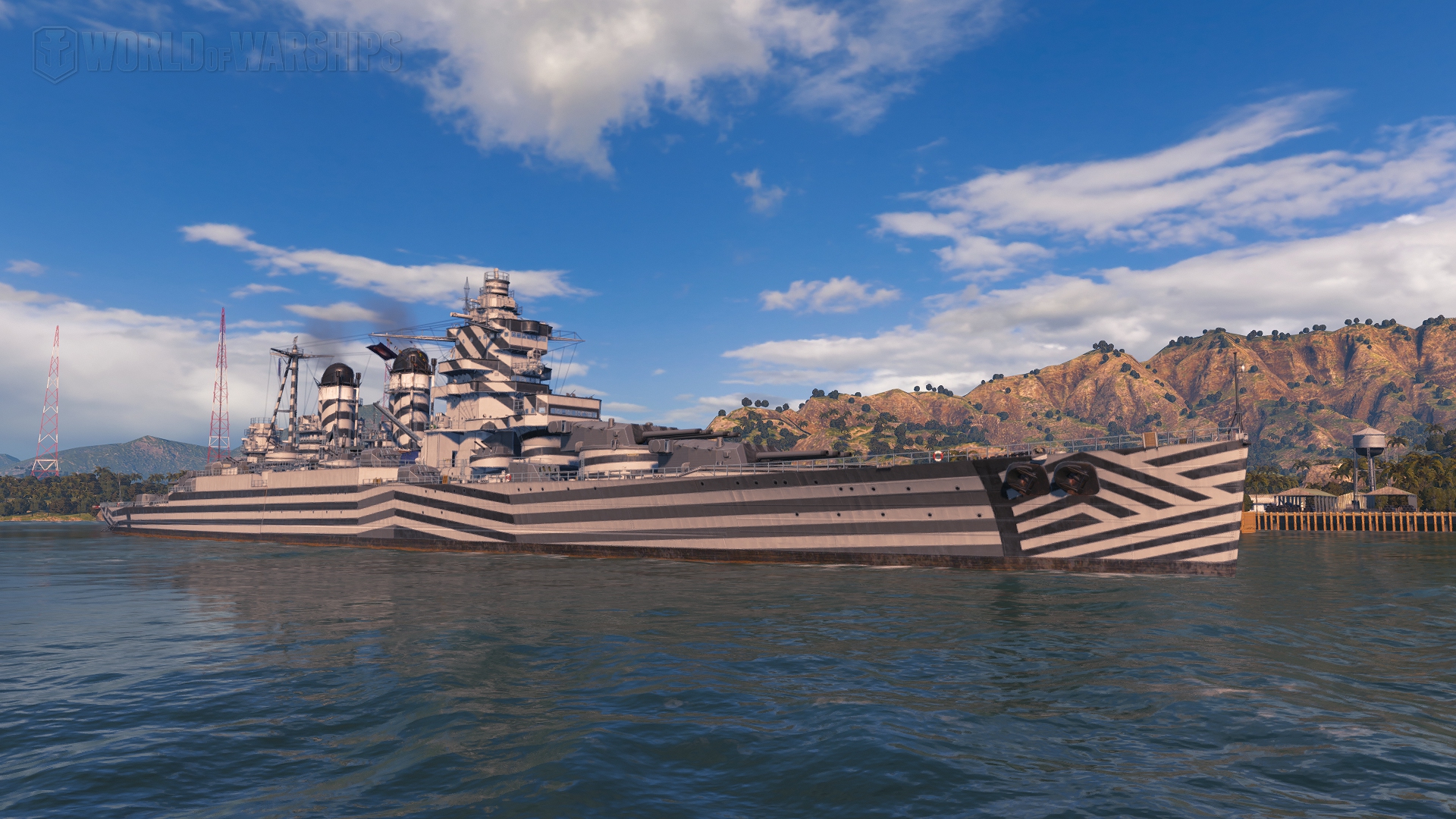
Camarades, Compagnons! The day has come! The first French high-tier battlecruiser is now available to purchase. You will find Carnot in the Armory for 228 000 Coal or 19 300 doubloons as well as in the Premium Shop.
Is she worth it? Is it a tier IX Henri IV? Is the 25 seconds reload time compensated by the rest of her characteristics? Here is my opinion on it.
Historical background
The Carnot is based on two preliminary designs for the Dunkerque-class battleships of the French Marine Nationale.
In 1926, in an effort to counter the Italian Trento-class heavy cruisers, the Chief of the Naval General Staff, Admiral Henri Salaun requested a new series of capital ships. The initial design was calling for a 17 500 tons battlecruiser armed with a main battery consisting of two quadruple turrets with 305 mm guns and with both turrets at the front.

With the potential future threat of the German Deutschland-class Panzerschiffe, the 17 500 tons design was abandoned in favor of a much larger one. The new “Croiseur de Bataille de 37 000 tonnes” was a massive battlecruiser armed with twelve 305 mm guns in three quadruple turrets for the A design and six 406 mm guns in three twin turrets for the B1 design. In essence, these designs were pretty much an enlarged version of the Suffren-class.
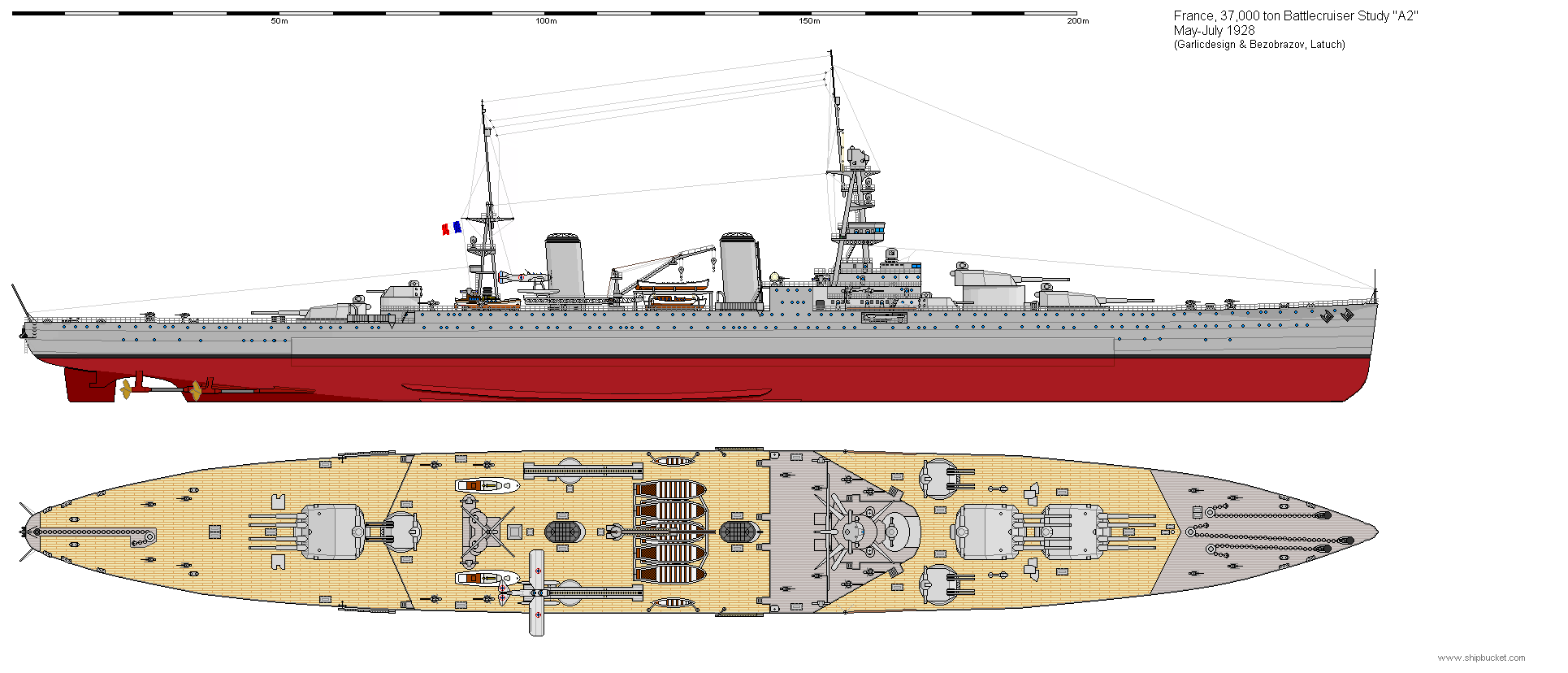
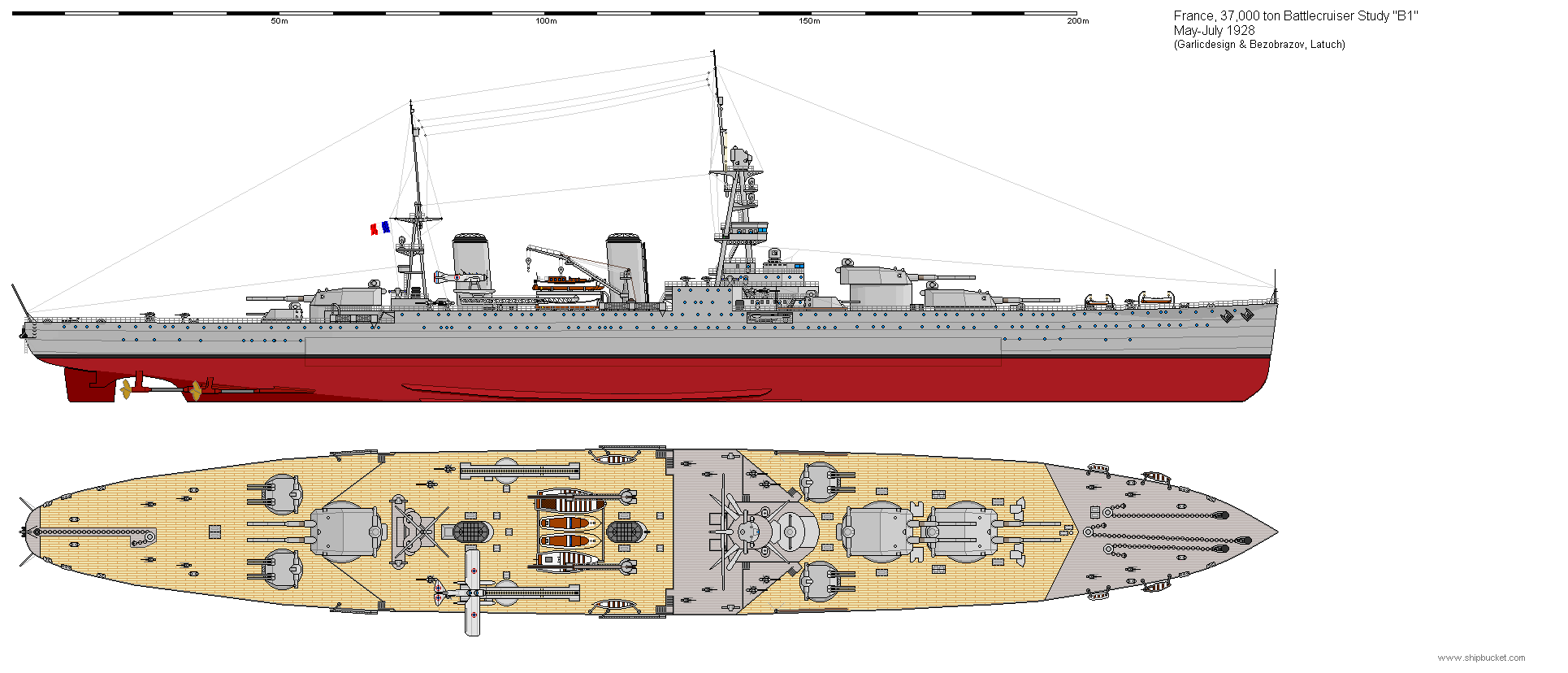
There was, however, a tiny issue. No shipyard in France was able to build such massive ships and so the idea was abandoned.
A follow-on design, much smaller, was then proposed called “Croiseur protégé de 23 690 tonnes”. This design was armed with ten 305 mm guns in two triple and one quadruple turret. However, the level of protection it would offer wasn’t enough against the 283 mm guns of the Deutschland-class which were considered as the main threat at the time.
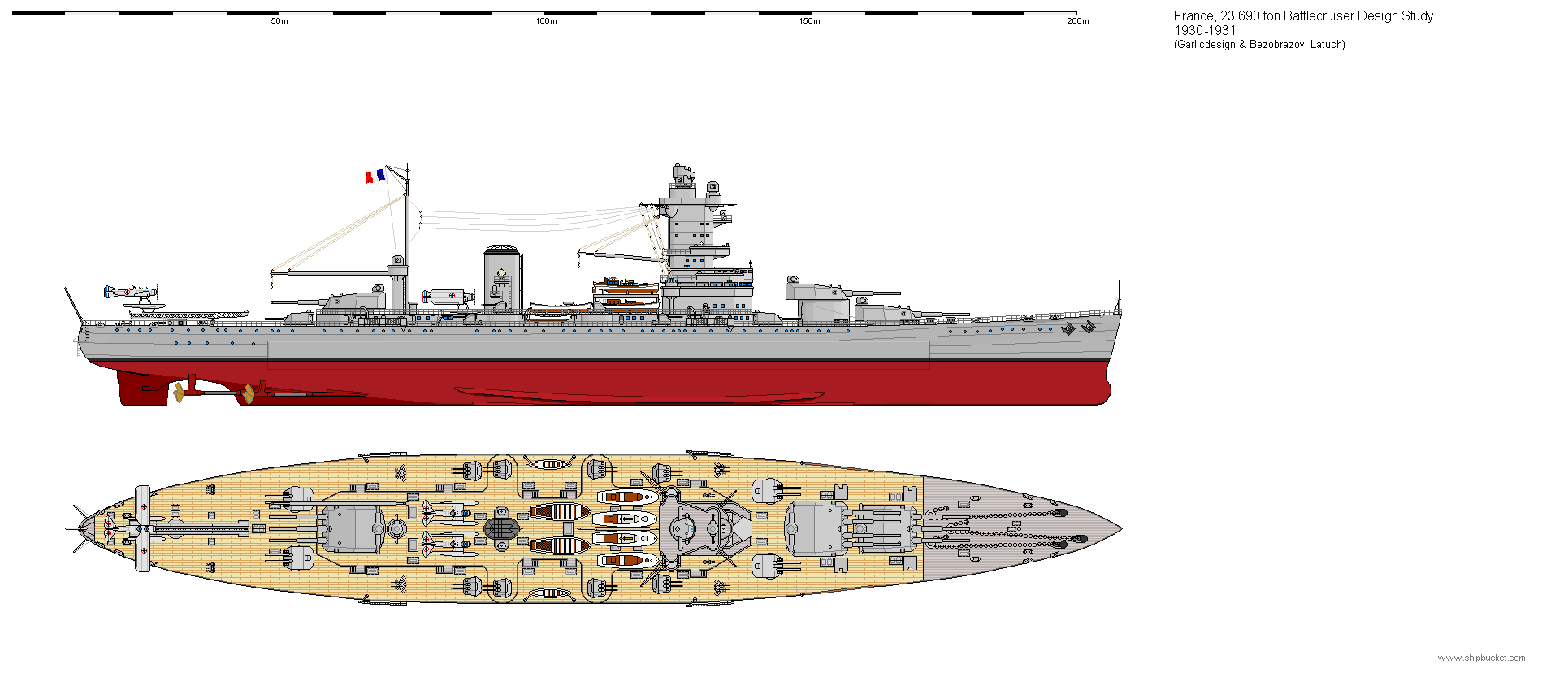
With some pressure from the French Parliament, a new set of requirements was issued, calling for a ship with an armor protection able to resist 283 mm guns as well as a main battery of eight 330 mm guns. This would lead to the construction of the Dunkerque-class as we know it today.
In World of Warships, Carnot is taking the armament of the later “Croiseur protégé de 23 690 tonnes” with a main battery of ten 305 mm and a secondary battery of eight 139 mm guns as well as sixteen 100 mm guns. When it comes to the hull, she is actually using the “Croiseur de Bataille de 37 000 tonnes” and most likely the A2 variant considering the position of the funnels.
Considering that Wargaming are using the 37 000 tons design for the hull, I bet you without much doubt that we will see the twelve guns design at tier X later with a simple turret swap being needed.
The Good and the Bad
The Good
- Great ballistics
- 10 guns broadside
- Hard-hitting AP shells
- 36 mm deck armor and 30 mm side armor
- Well protected citadel
- Very high amount of HP
- 20% Engine Boost consumable allowing the ship to reach more than 43 knots
- Capacity to speed dodge similar to Henri IV before her engine’s nerf
- The freaking aesthetic of the razzle-dazzle camo!
The Bad
- Underwhelming HE damage output
- Very long main battery reload time of 25 seconds
- Bad firing angles at the rear
- High freeboard and as a whole, large target
- Poor concealment
- Spotting aircraft consumable in the same slot as the Engine Boost
The camouflage
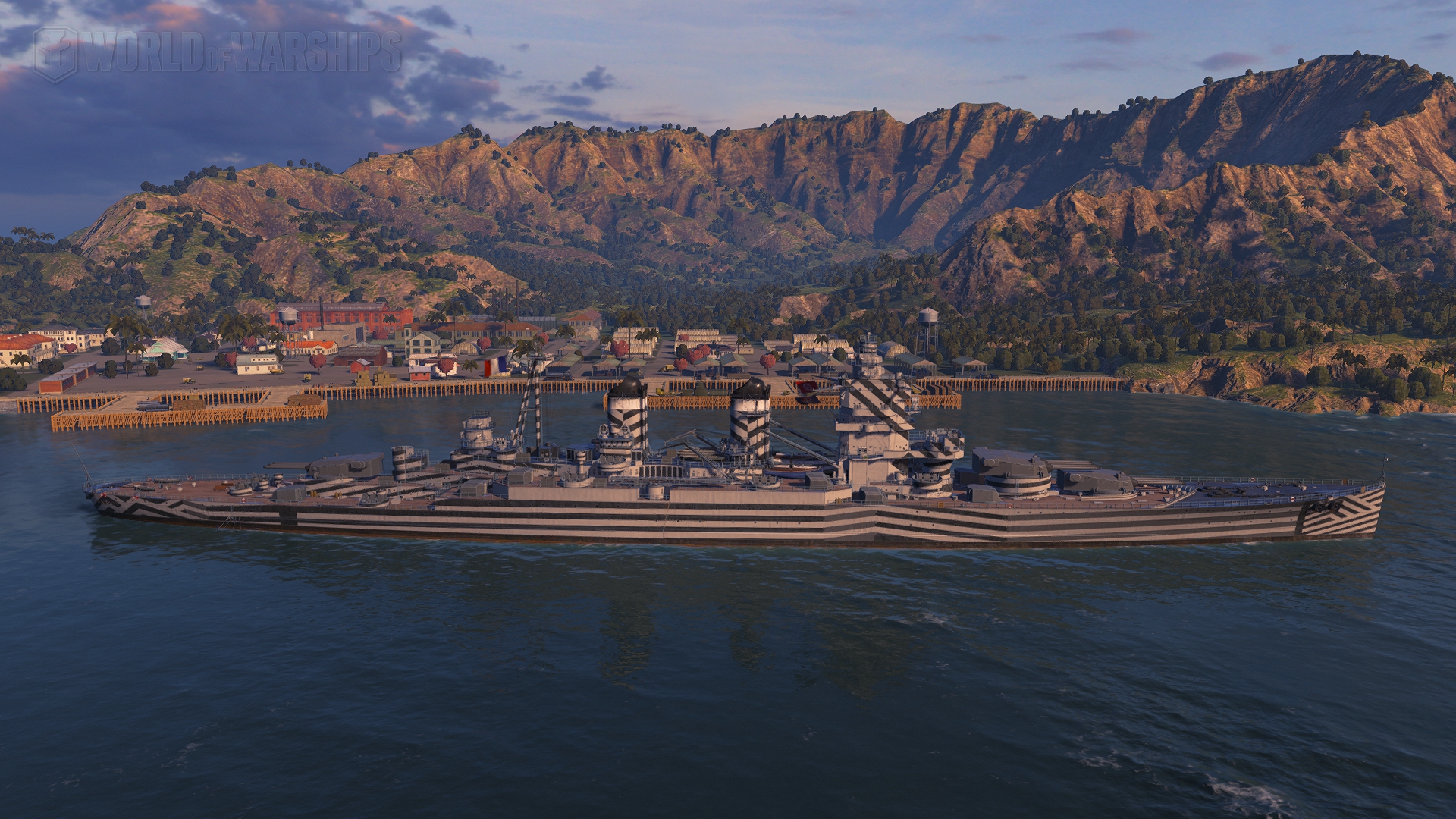
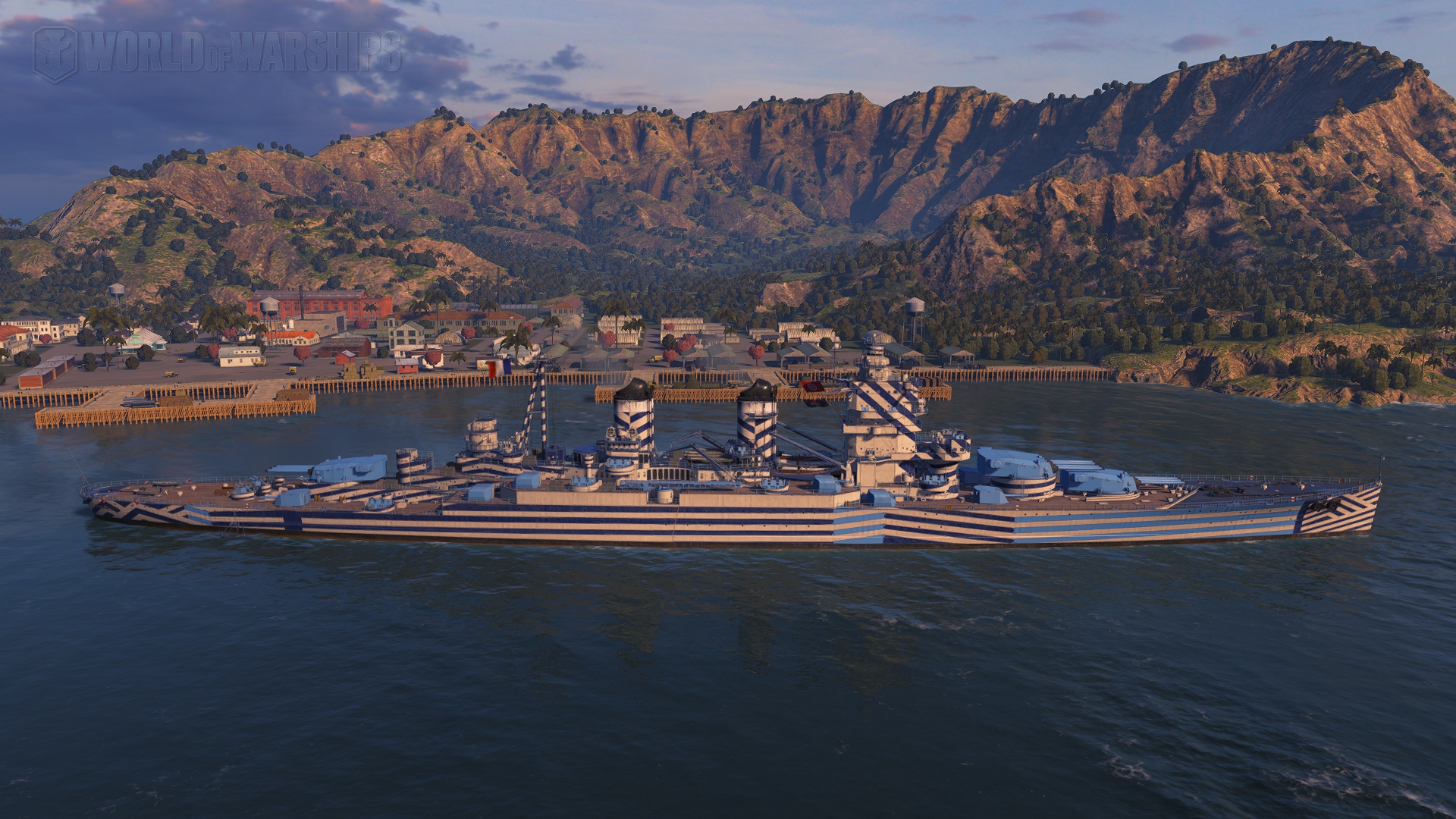
The permanent camouflage of the Carnot provides the classic bonuses for tier IX ships:
- -3% to surface detectability range
- +4% to maximum dispersion of shells fired by the enemy at your ship
- -20% to the cost of ship’s post-battle service
- +100% to experience earned in the battle
Modules
Hull | Engine | Gun Fire Control System | Main battery |
Carnot |
Propulsion: 160 000 hp |
PCA n° 9 Mle 1 | 305 mm/50 Mle 1930 |
General Characteristics and Playstyle
| Tier | IX |
| Health | 66 450 HP |
| Torpedo Damage Reduction | 19 % |
| Displacement | 38 270 tons |
| Dimensions | |
| Overall length | 254.5 m |
| Beam | 30.52 m |
| Overall height (keel to the highest point on the ship) | 34.0 m |
| Freeboard | 10.3 m |
| Main Armament | |
| Maximum Firing Range | 18.560 km |
| 305 mm/50 Mle 1930 | 2 x 3 305 mm 1 x 4 305 mm |
| Secondary Armament | |
| Maximum Firing Range | 7.950 km |
| 139 mm/50 Mle 1929 100 mm/55 CAD Mle 1945 | 4 x 2 139 mm 8 x 2 100 mm |
| Maximum speed | 34.5 knots |
| Turning Circle Radius | 870 m |
| Rudder Shift Time | 14.4 s |
| Surface Detectability | 15.3 km |
| Air Detectability | 10.62 km |
| Detectability After Firing Main Guns in Smoke | 11.9 km |
Slot 1 | Slot 2 | Slot 3 | Slot 4 |
Damage Control Party  Work time: 5 s Work time: 5 sCooldown: 60 s | Defensive AA Fire  Number of charges: 3 Number of charges: 3Work time: 40 s Cooldown: 80 s Continuous Damage: +50% Damage from shell explosions: +300% | Engine Boost  Number of charges: 3 Number of charges: 3Work time: 180 s Cooldown: 90 s Speed bonus: +20% | Repair Party  Number of charges: 3 Number of charges: 3Work time: 28 s Cooldown: 80 s HP regeneration: 0.5%/s Casemate damage regeneration: 50% Citadel damage regeneration: 30% |
Hydroacoustic Search  Number of charges: 3 Number of charges: 3Work time: 100 s Cooldown: 120 s Torpedo spotting range: 3.5 km Ship spotting range: 5.0 km | Fighter  Number of charges: 3 Number of charges: 3Work time: 60 s Cooldown: 90 s Number of planes in a squadron: 4 | ||
Spotting Aircraft  Number of charges: 4 Number of charges: 4Work time: 100 s Cooldown: 240 s Maximum firing range: +20% |
Overall, the Carnot stays relatively in line with what you could expect from a French cruiser. A very mobile kiting cruiser blazing guns at everything in range. However, unlike the rest of the French cruisers that heavily rely on HE, the Carnot is a lot more focused on the AP, able to slap very hard anything giving her broadside.
Another thing that makes her stand apart from the other French cruisers is her great armor protection. While the ship stands high on the water, she is well protected for a tier IX cruiser with 30 mm sides to be able to resist battleship salvos and even a 36 mm deck to provide her with some form of protection against HE from cruisers and AP from everything bigger than 420 mm.
While the Carnot is a kiting cruiser, there is one thing that messes up with the kiting part and it’s the firing angles. When firing at the rear, you need the ship to be angled at 39° if you want to fire all guns. This means that AP shells will be able to penetrate your sides without too many troubles. As such, you ALWAYS need to be careful and think about reangling the ship after firing unless your target doesn’t pay attention to you.
Except that, you will generally see yourself working on catching enemy ships broadside to get that AP in action. This can be done quite easily thanks to the great mobility of the Carnot. I don’t recommend running a full lighthouse build as it ends up giving you very little to no room at all for getting to position unnoticed.
If you want to see the ship in action, here is a replay from one of my games:
Main Battery
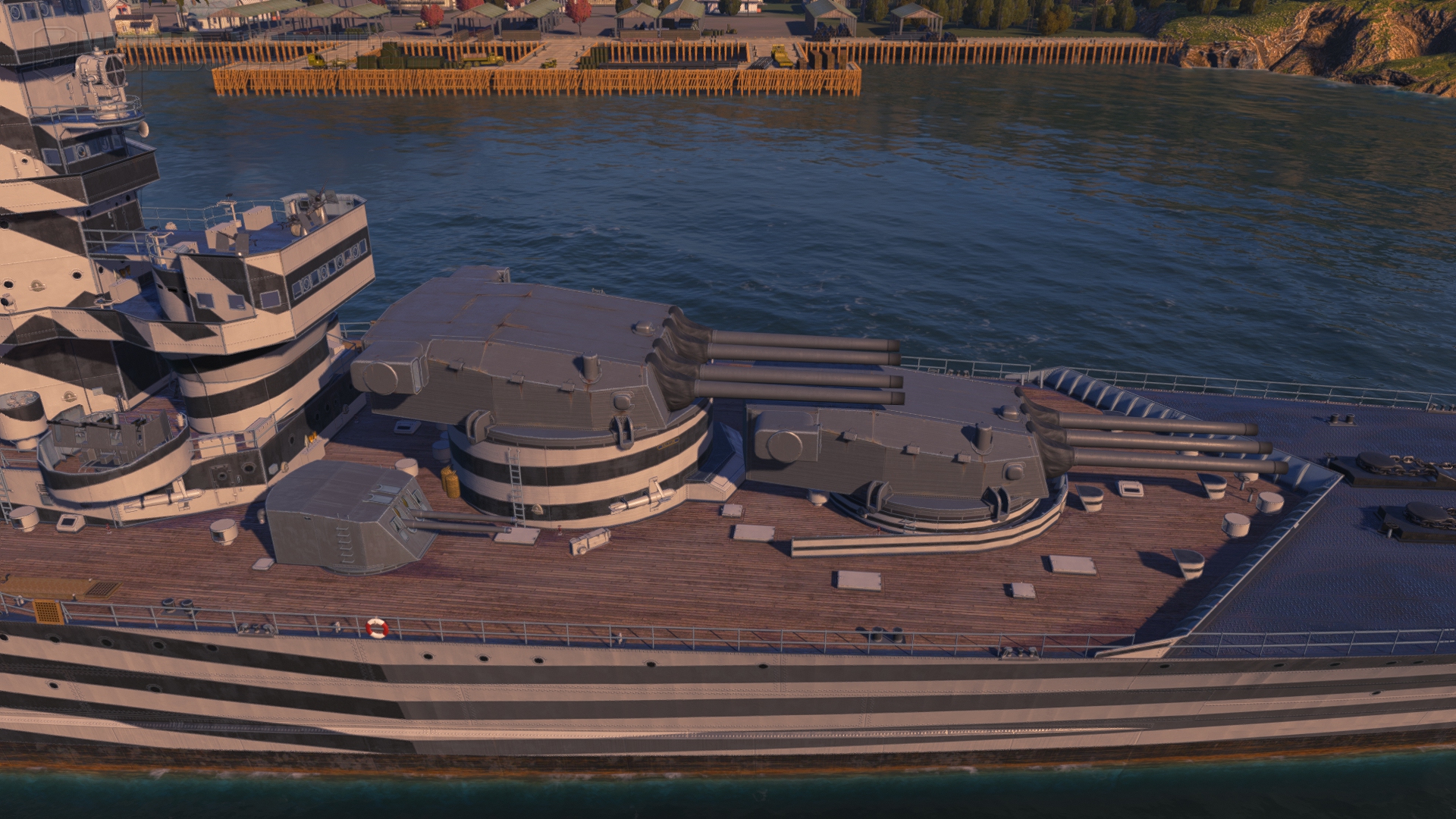
| 2 x 3 305 mm/50 Mle 1930 1 x 4 305 mm/50 Mle 1930 | |
| Maximum Firing Range | 18.560 km |
| Reloading Time | 25.0 s |
| 180 Degree Turn Time | 30.0 s |
| Optimal firing angles at the front | 28° |
| Optimal firing angles at the rear | 39° |
| Sigma | 2.05 sigma |
| Maximum Dispersion | 204 m |
| Shells | |
| Type of Projectile | HE – 305 mm HE OEA Mle 1910 |
| Alpha Damage | 4 250 HP |
| Damage | 2 700 HP |
| Penetration capacity | 51 mm |
| Explosion size | 1.6 |
| Fire chance | 25 % |
| Projectile Speed | 905 m/s |
| Air Drag | 0.27 |
| Projectile Mass | 426 kg |
| Type of Projectile | AP – 305 mm AP OPf Mle 1910 |
| Alpha Damage | 8 700 HP |
| Projectile Speed | 870 m/s |
| Air Drag | 0.265 |
| Projectile Mass | 442 kg |
| Projectile Krupp | 2 225 |
| Projectile Detonator | 0.033 s |
| Detonator threshold | 51 mm |
| Ricochet Angles | 45° – 60° |
The main armament of the Carnot represents a certain oddity among French cruisers as… well let’s be honest, her HE is fairly lackluster. The fire chances are low and so is the damage output as a whole.
As a result, you will find yourself relying on the AP a lot more but thankfully, that AP doesn’t disappoint with fast shells and pretty good penetration (slightly superior to Alaska at all ranges). I won’t lie though, I miss the short AP fuse the ship had at the start.
Because of the long reload time, the ammo choice is crucial and Expert Loader is a high priority skill. If you want you can take it before Grease the Gears which is also very important as otherwise, your turrets won’t be able to stay on target when turning at full speed.
Secondary Armament
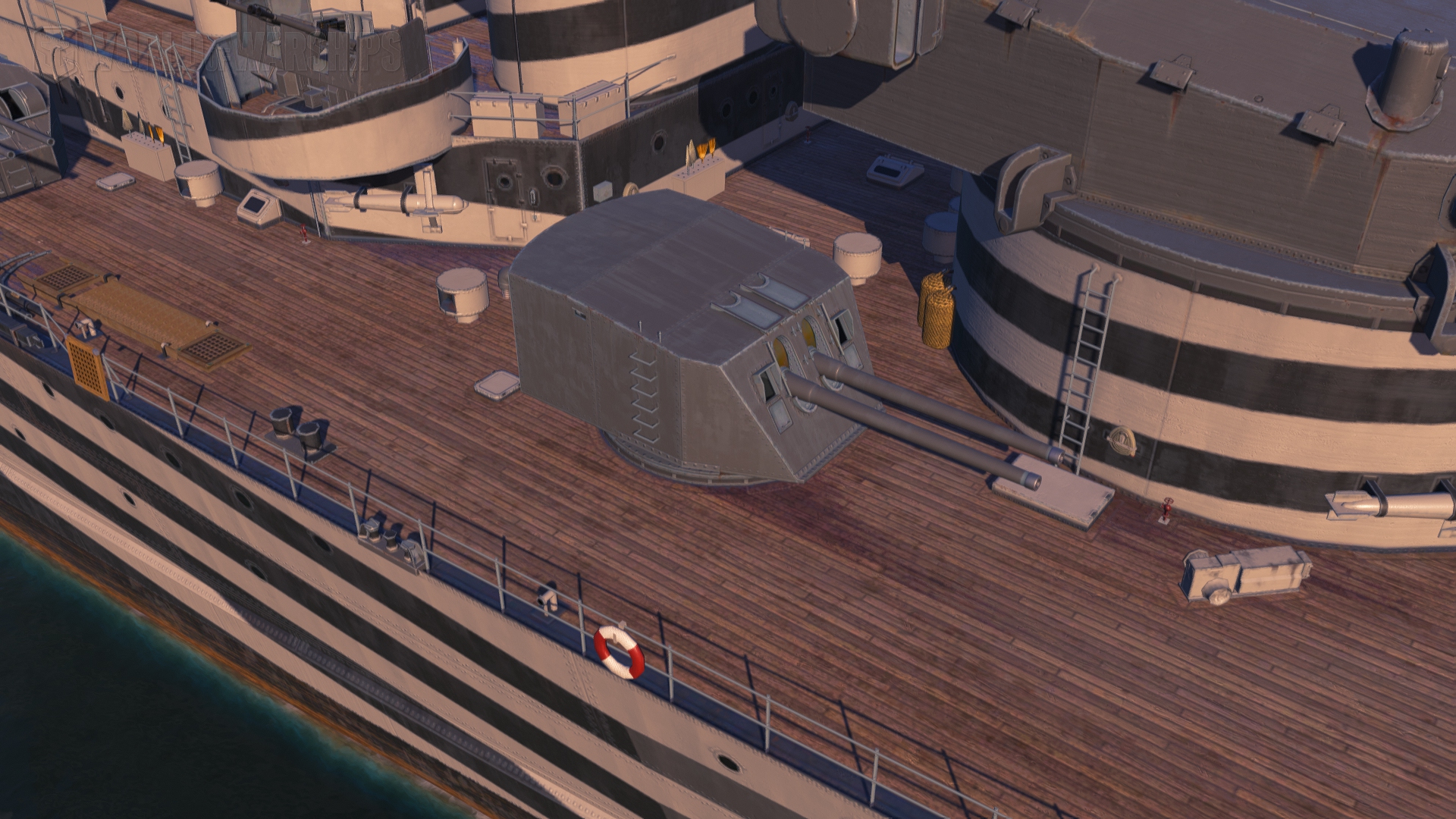
| 4 x 2 139 mm/50 Mle 1929 | |
| Maximum Firing Range | 7.950 km |
| Reloading Time | 10.0 s |
| Sigma | 1.00 sigma |
| Shells | |
| Type of Projectile | HE – 139 mm HE OEA Mle 1910 |
| Alpha Damage | 2 000 HP |
| Damage | 530 HP |
| HE penetration | 23 mm |
| Explosion Size | 0.47 |
| Chance to Cause Fire | 8 % |
| Projectile Speed | 840 m/s |
| Air Drag | 0.376 |
| Projectile Mass | 31.5 kg |
| 8 x 2 100 mm/55 CAD Mle 1945 | |
| Maximum Firing Range | 7.950 km |
| Reloading Time | 3.0 s |
| Sigma | 1.00 sigma |
| Shells | |
| Type of Projectile | HE – 100 mm HE OEA Mle 1945 |
| Alpha Damage | 1 400 HP |
| Damage | 300 HP |
| HE penetration | 17 mm |
| Explosion Size | 0.29 |
| Chance to Cause Fire | 5 % |
| Projectile Speed | 855 m/s |
| Air Drag | 0.314 |
| Projectile Mass | 13.32 kg |
The secondaries are surprisingly not useless.
The Carnot has a heavy broadside of 12 guns including fast-firing 100 mm secondaries which are very nice to start random fires or as a whole, getting some extra damage on superstructures.
Anti-air Armament
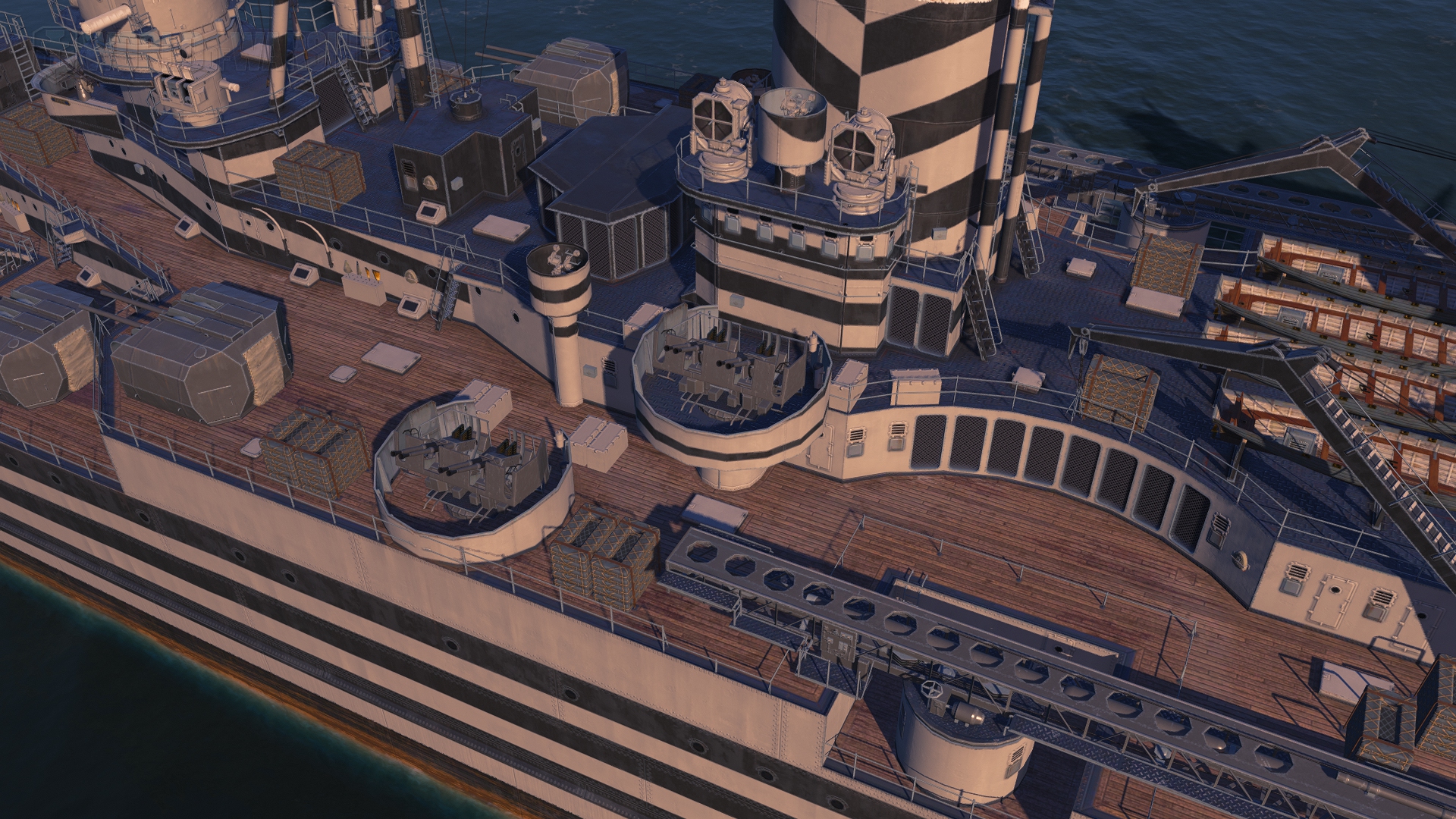
| 8 x 2 100 mm/55 CAD Mle 1945 | |
| Sector range | 0.1 km – 5.8 km |
| Hit chance | 90 % |
| Sector’s damage | 40 |
| Sector’s damage frequency | 0.29 s |
| Sector’s damage per second | 140 |
| Flak clouds number | 6 |
| Flak cloud damage | 1 400 |
| 12 x 4 40 mm/56 Bofors Mk2 | |
| Sector range | 0.1 km – 3.5 km |
| Hit chance | 90 % |
| Sector’s damage | 93 |
| Sector’s damage frequency | 0.29 s |
| Sector’s damage per second | 326 |
| 13 x 1 20 mm/70 Mk4 | |
| Sector range | 0.1 km – 2.0 km |
| Hit chance | 90 % |
| Sector’s damage | 93 |
| Sector’s damage frequency | 0.29 s |
| Sector’s damage per second | 326 |
The anti-air on Carnot definitely isn’t bad. While she only has 6 flaks per salvo, the DPS on all ranges is reasonably high and with Defensive AA fire, you will be able to defend yourself fairly reliably.
The Armor
Carnot presents a very nice armor protection. While the ship sits high on the water, the sides and deck will allow you to easily bounce shells from enemy battleships and the deck will give you some protection against HE from cruisers.
The only real weakness is the part between the upper and lower deck that can turn into a shell magnet when kiting.
As for the turtleback, it’s very effective against AP from cruisers. Battleships sadly overmatch it but at least, the citadel sits just at the waterline.
External armor protection:

Front and rear armor protection of the middle section:
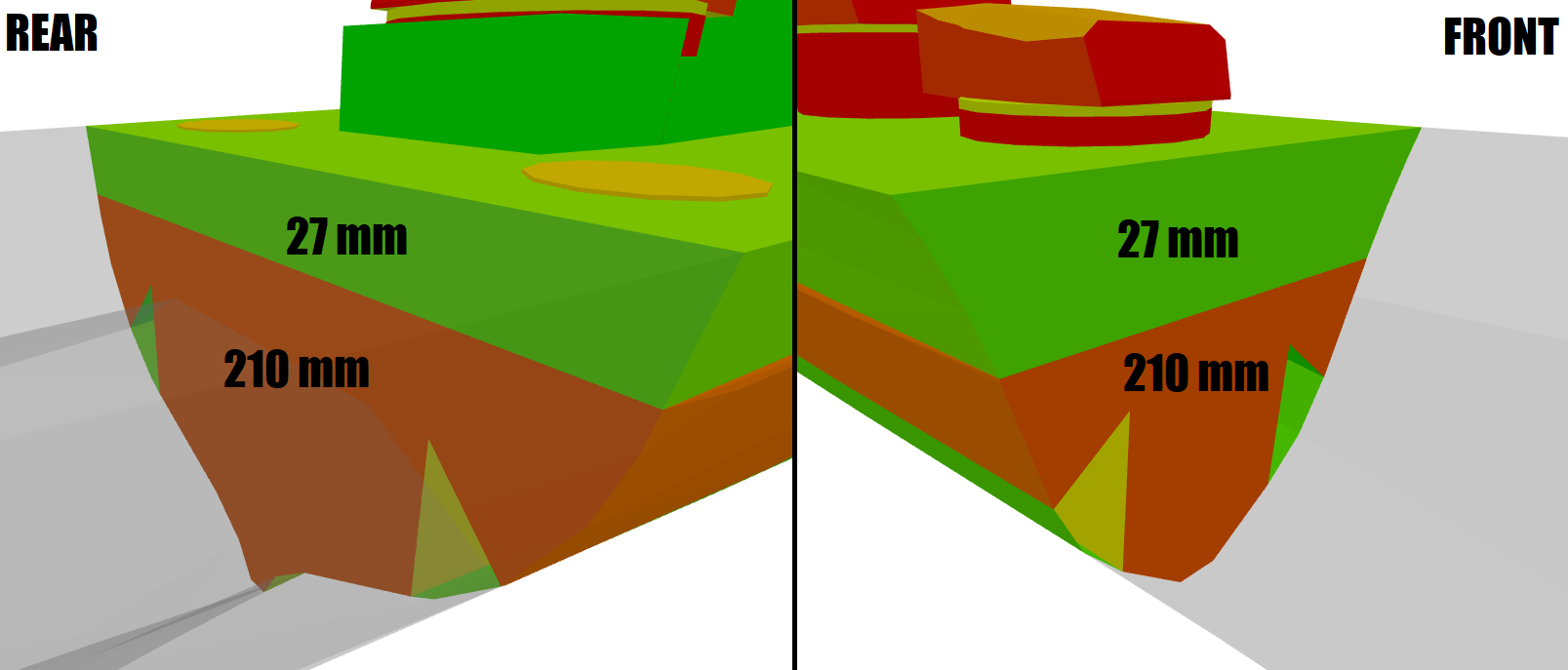
Hidden main armor deck:

Turtleback:

Citadel armor protection:
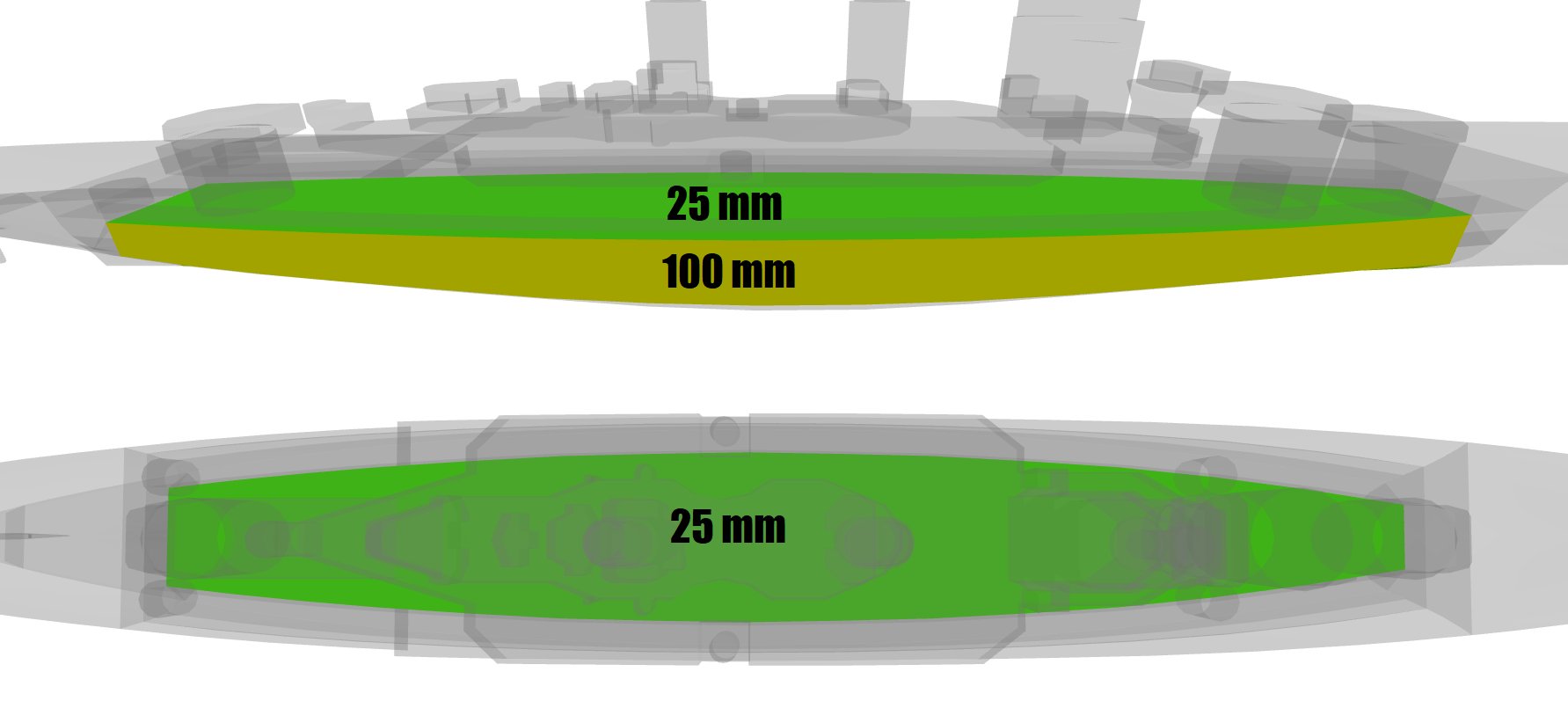
Turrets armor protection:
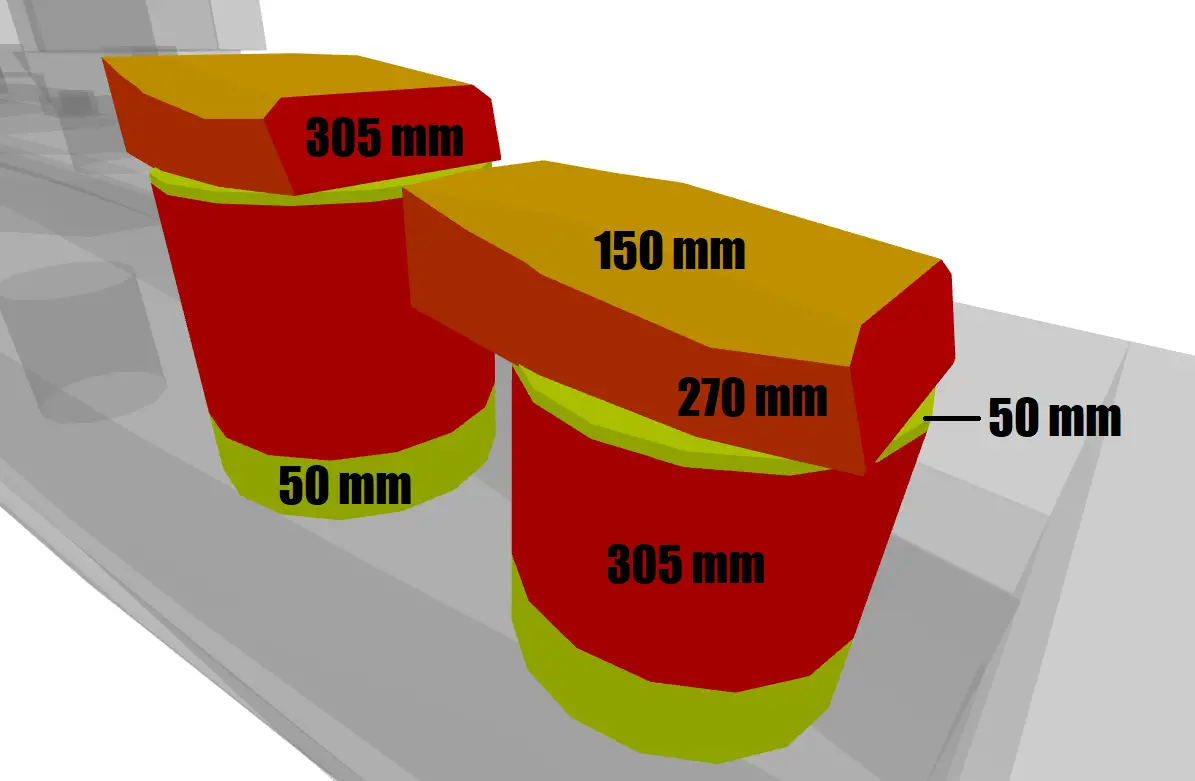
Hidden armor protection inside the stern:
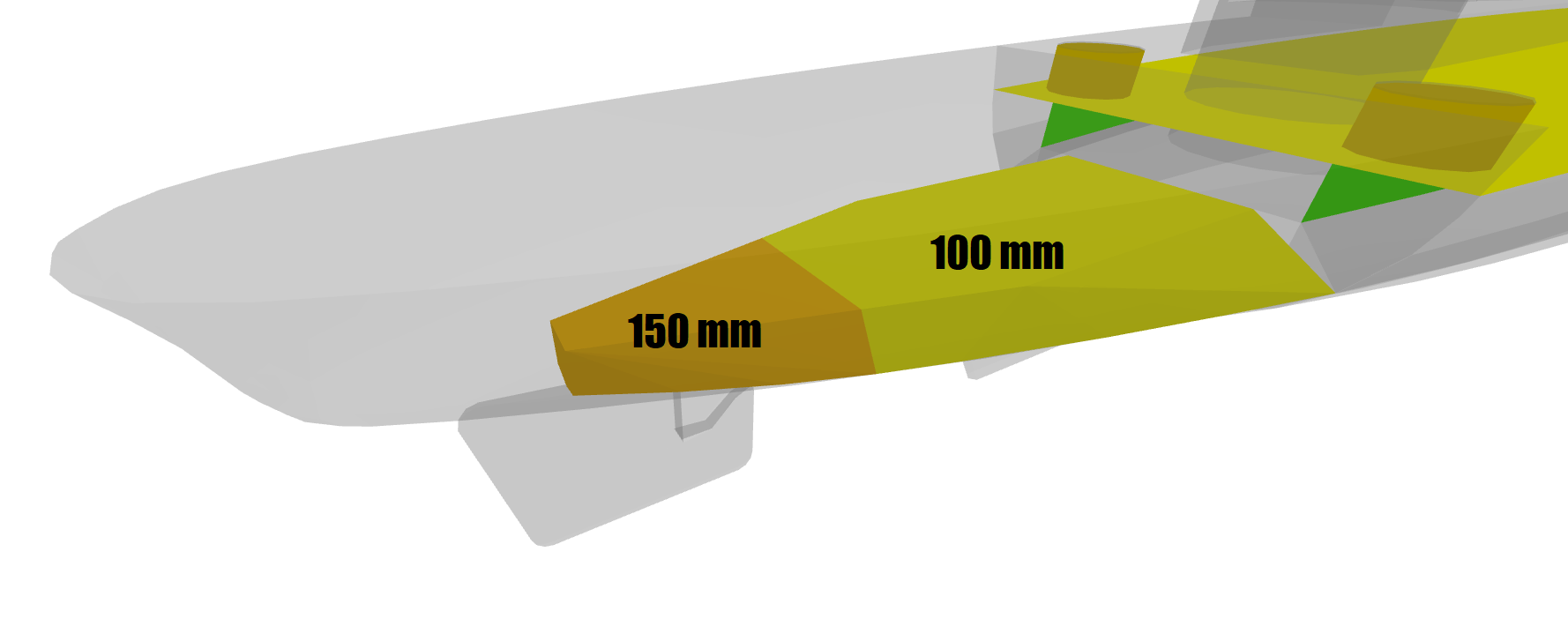
Final Opinion
Overall, I quite enjoyed the Carnot. It’s not as strong or impactful as an Alaska but for a guy like me who likes kiting cruisers, it’s definitely a nice experience.
The HE might not be very good but the AP slaps hard at all ranges and generally speaking, the firepower is compensated by the capacity the ship has to stay alive.
In the end, it’s a nice, well-balanced premium that I can recommend.
Recommended Build
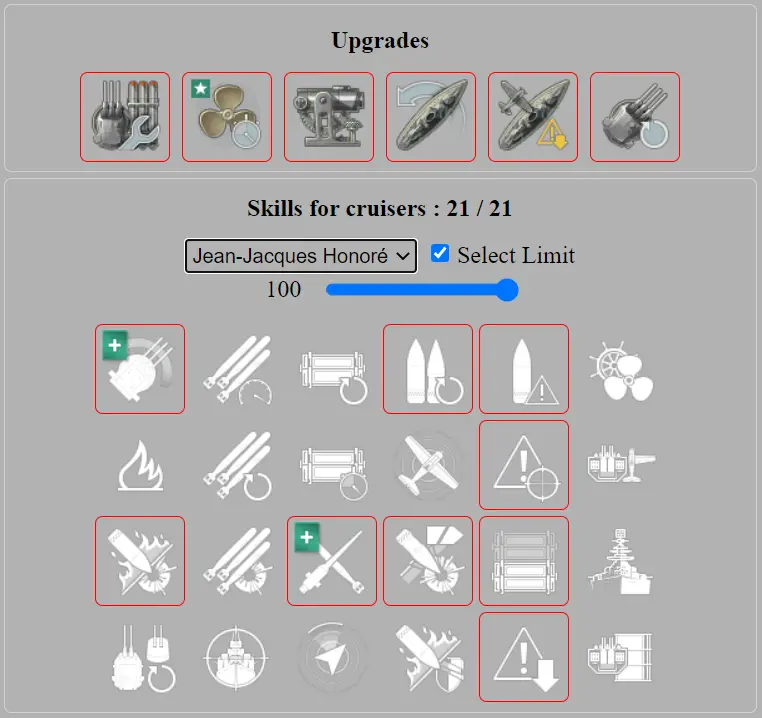
For the Carnot, I recommend the following commander build:
- Grease the Gears
- Priority Target
- Superintendent
- Concealment Expert
- Adrenaline Rush
- Expert Loader
- Heavy AP Shells
- Heavy HE and SAP Shells
- Incoming Fire Alert
I really recommend one of the Honoré brothers because of their buffed Grease the Gears and Adrenaline Rush.
This concludes my review of the Carnot. Thank you for reading this article!
Don’t hesitate to subscribe to our notifications to make sure that you don’t miss any future articles.
Have a good one and see you soon!





